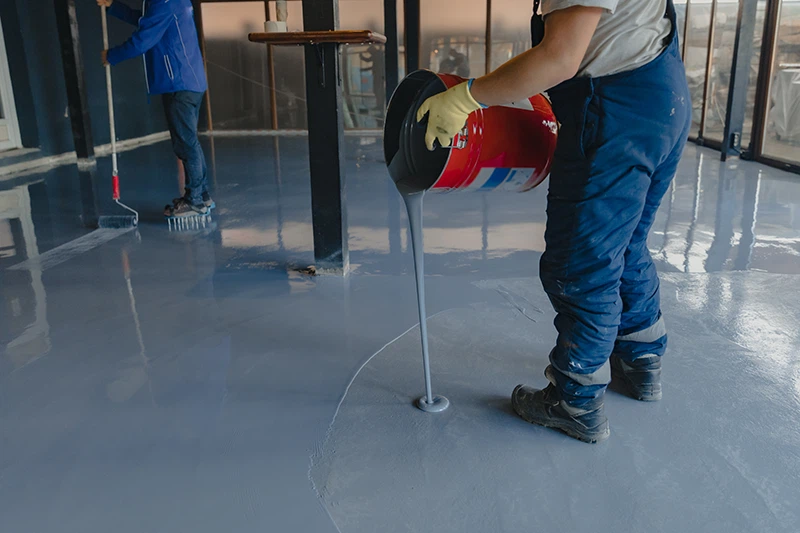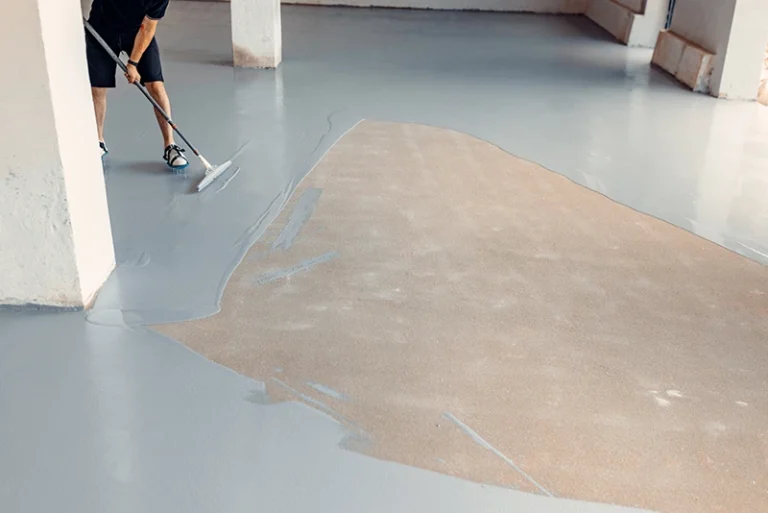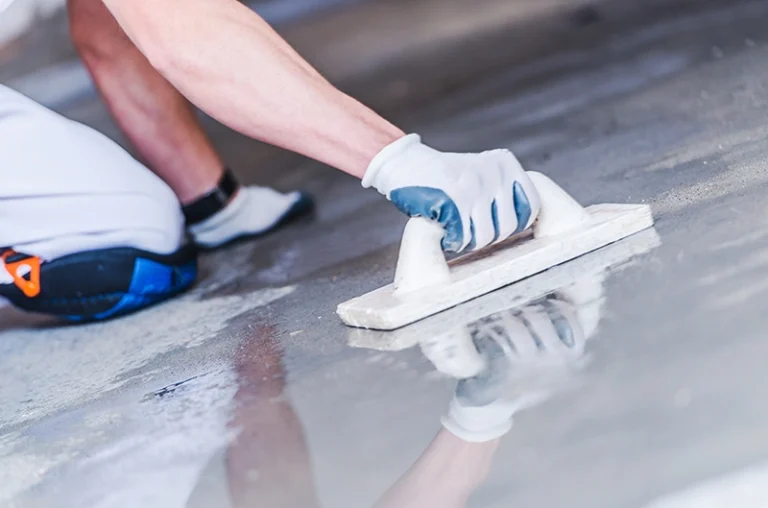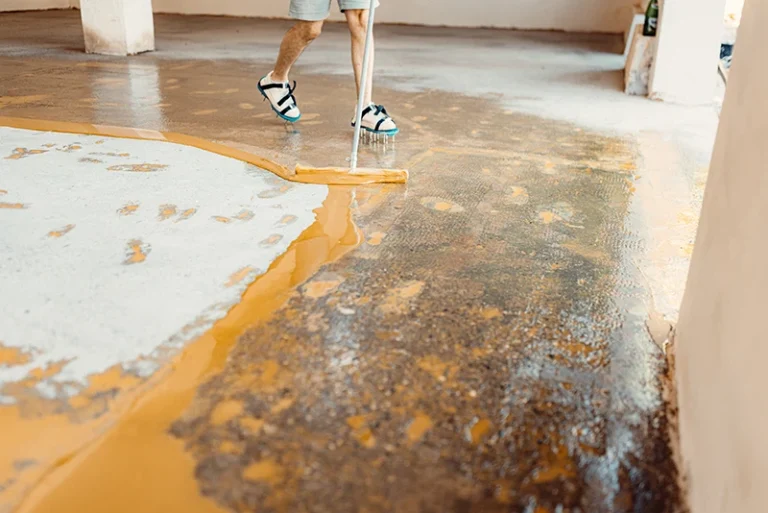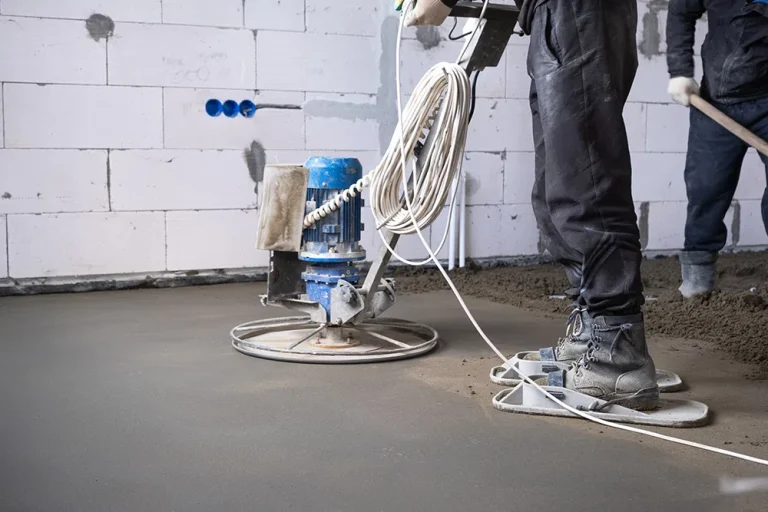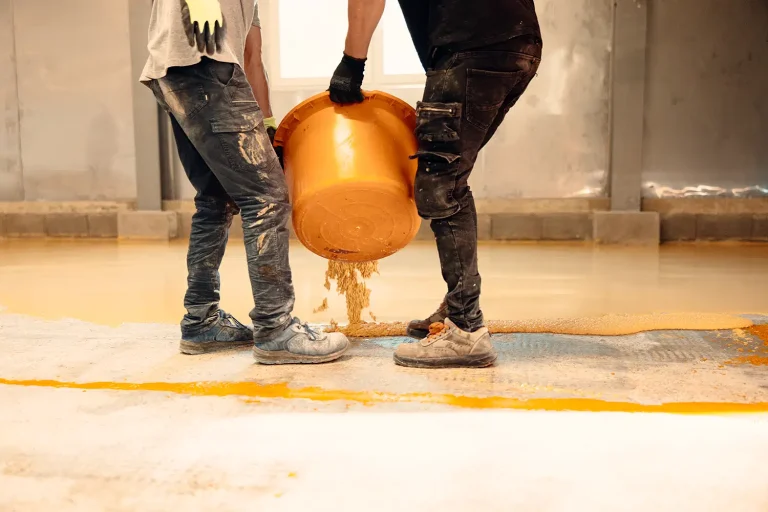How Long Does an Epoxy Flooring Company Take to Complete a Project?
Whether you’re upgrading your garage, basement, or commercial space, epoxy flooring is a durable, attractive solution that’s growing in popularity. One of the most common questions people ask before committing is: How long will the installation take?
The timeline can vary based on several factors, such as the size of the space, the condition of the concrete, and the type of epoxy system being used. Understanding the process and typical time frames helps homeowners and business owners plan more effectively, avoid disruptions, and ensure the best results from their flooring investment.
Factors That Influence Project Duration
Project size and scope: Larger areas or custom designs usually require more time to complete.
- Larger square footage takes longer to prep and coat: For example, a standard two-car garage epoxy flooring project may take 1–2 days, while a commercial warehouse could take up to a week, depending on the surface area.
- Multiple rooms or complex layouts require additional planning: Irregular shapes, floor drains, or connected rooms may add a day or more to the timeline.
Surface preparation requirements: The condition of the existing concrete heavily impacts how long the job will take.
- Damaged or stained concrete needs extra prep time: Cracks, oil stains, or moisture issues must be addressed before epoxy application, often adding a day or more.
- Mechanical grinding or shot blasting is often necessary: These preparation methods ensure proper epoxy adhesion, but can extend the project by several hours or an extra day.
Type of epoxy system used: Different systems have different curing and application requirements.
- Standard epoxy systems usually take 2–3 days. This includes time for surface prep, base coat, optional flakes or textures, and a topcoat.
- High-performance or multi-layer systems may take longer: Polyaspartic, metallic, or decorative quartz systems can require additional layers and curing time, pushing the total to 4–5 days.
Day-by-Day Timeline Overview
Initial consultation and site inspection: This typically occurs before scheduling the installation.
- On-site assessments help determine job complexity: Contractors inspect moisture levels, concrete integrity, and project goals, usually in a one-hour visit.
- Scheduling the job depends on availability and weather: For exterior or unheated spaces, weather can delay start dates.
Day 1 – Surface preparation: This is a critical step that sets the foundation for the epoxy to bond properly.
- Grinding, patching, and cleaning occur on day one: These steps remove contaminants and repair imperfections, typically taking a full day depending on the floor condition.
- Moisture barriers may be applied if needed: If high moisture levels are found, installing a moisture vapor barrier can add extra time.
Day 2 – Base coat and optional flakes or textures: The first epoxy coat is applied, and decorative elements are added if desired.
- Base coat applied and cured overnight: Contractors roll out the first coat and may add flake or quartz for texture and grip.
- Flake systems need time to dry before scraping and vacuuming. Excess flakes are scraped and removed the next day to prepare for sealing.
Day 3 – Topcoat application: The final step ensures durability and shine.
- Topcoat seals and protects the floor: Applied in a smooth, even layer, the topcoat cures over the next 24–48 hours.
- Curing time varies based on epoxy type and environment: Humidity, temperature, and airflow all affect how quickly the floor is ready for use.
Curing and Return-to-Service Time
Curing isn’t complete immediately after application: Although the floor may look dry, it’s still hardening.
- Light foot traffic is allowed after 24 hours: You can walk on the floor carefully the next day, but heavy traffic should be avoided.
- Wait 72 hours before placing heavy items or vehicles: For garages and warehouses, it’s crucial to let the epoxy fully cure to prevent damage.
Curing time depends on temperature and epoxy formulation: Cooler temps can slow curing, while polyaspartic systems may cure faster.
- Fast-cure systems may be ready in 24–48 hours. These are ideal for commercial projects needing quick turnaround.
- Standard systems need 3–5 days for full strength. Planning accordingly avoids premature damage to the new surface.
Tips for a Smoother Installation Process
Planning and understanding the timeline helps prevent surprises: Proper preparation makes for a more efficient and lasting installation.
- Clear the area ahead of time: Remove furniture, vehicles, and stored items to avoid delays.
- Ask your contractor about their schedule and curing recommendations: A clear timeline helps manage expectations and ensures proper drying time.
- Avoid DIY shortcuts that compromise the outcome: Professional installers have the tools and experience to deliver long-lasting results.
The time it takes for an epoxy flooring company to complete a project typically ranges from 2 to 5 days, depending on a range of variables such as floor size, prep work, and type of epoxy used. Knowing what to expect helps property owners plan accordingly and ensures the finished product not only looks great but also performs reliably for years to come.
Investing a few days in proper installation can mean decades of durable, low-maintenance flooring.

